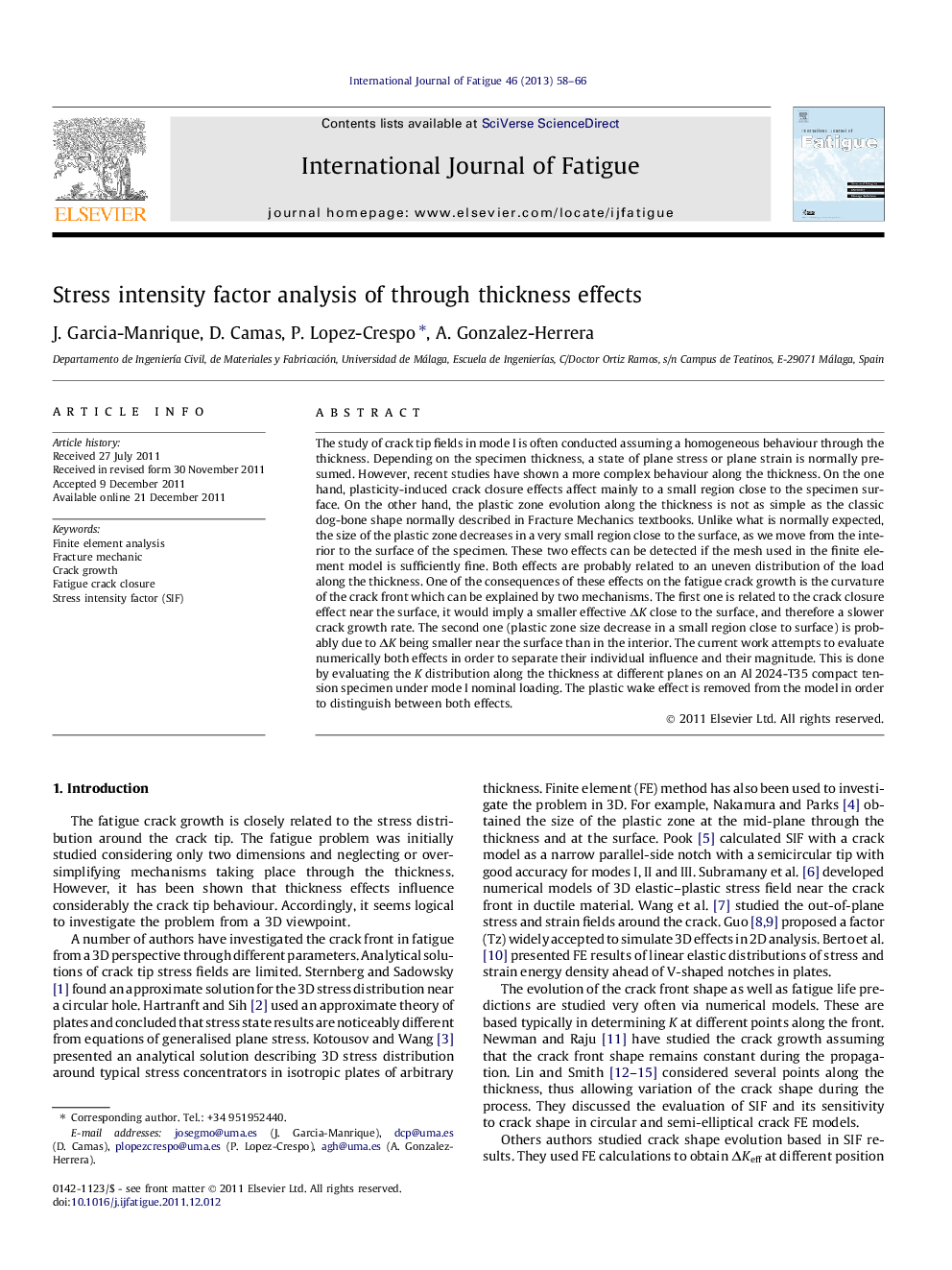| Article ID | Journal | Published Year | Pages | File Type |
|---|---|---|---|---|
| 775366 | International Journal of Fatigue | 2013 | 9 Pages |
The study of crack tip fields in mode I is often conducted assuming a homogeneous behaviour through the thickness. Depending on the specimen thickness, a state of plane stress or plane strain is normally presumed. However, recent studies have shown a more complex behaviour along the thickness. On the one hand, plasticity-induced crack closure effects affect mainly to a small region close to the specimen surface. On the other hand, the plastic zone evolution along the thickness is not as simple as the classic dog-bone shape normally described in Fracture Mechanics textbooks. Unlike what is normally expected, the size of the plastic zone decreases in a very small region close to the surface, as we move from the interior to the surface of the specimen. These two effects can be detected if the mesh used in the finite element model is sufficiently fine. Both effects are probably related to an uneven distribution of the load along the thickness. One of the consequences of these effects on the fatigue crack growth is the curvature of the crack front which can be explained by two mechanisms. The first one is related to the crack closure effect near the surface, it would imply a smaller effective ΔK close to the surface, and therefore a slower crack growth rate. The second one (plastic zone size decrease in a small region close to surface) is probably due to ΔK being smaller near the surface than in the interior. The current work attempts to evaluate numerically both effects in order to separate their individual influence and their magnitude. This is done by evaluating the K distribution along the thickness at different planes on an Al 2024-T35 compact tension specimen under mode I nominal loading. The plastic wake effect is removed from the model in order to distinguish between both effects.
